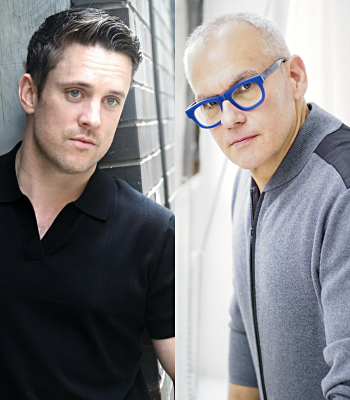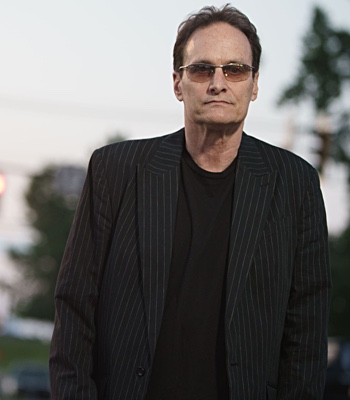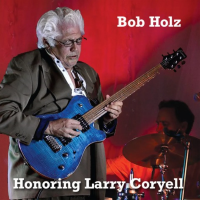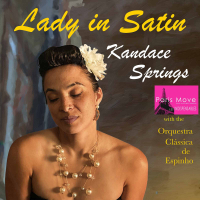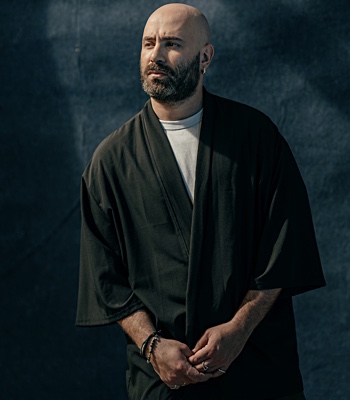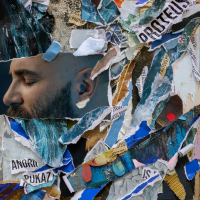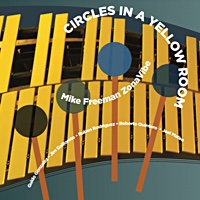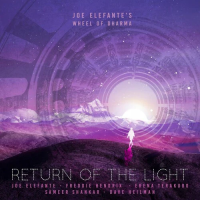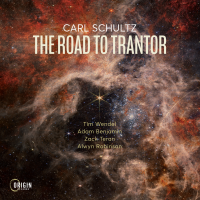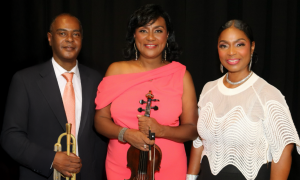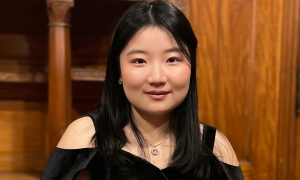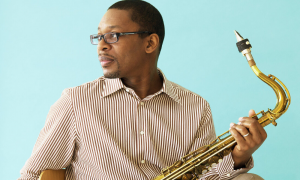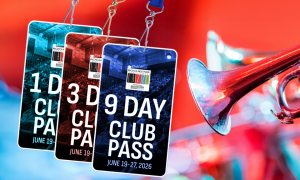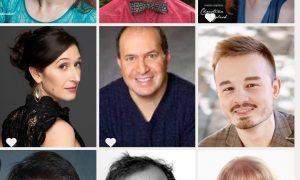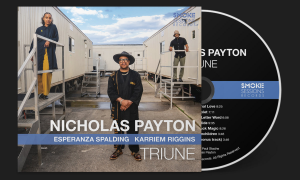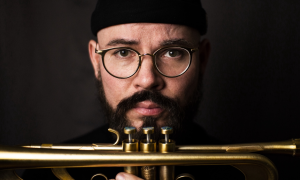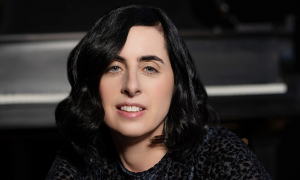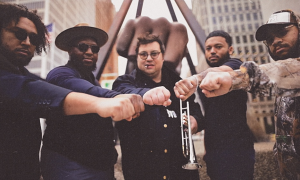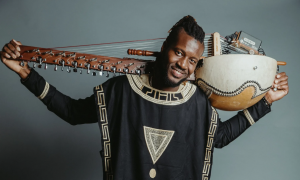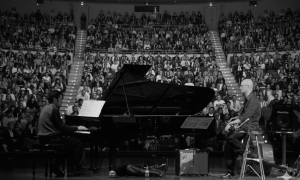By Pico
Although the order of these CD's are random, it's no accident that two of these selections are older recordings issued by Cuneiform Records. Although old, both are keeping in line with the label's reputation for adventurous, experimental music. A third also is a new issue of a vintage, mind expanding recording. Yet another comes from ESP-Disk, which name is synonymous with experimental. The rest are a hodgepodge of competent mainstream jazz.
Who are these artists responsible for this batch? Click on the “read the rest" link below to find out...
Joe Morris Camera: Last year's Colorfield was Joe Morris' convincing debut for ESP-Disk. This year's follow-up follows the same strategy of going without a bass (an instrument that he, ironically, is very proficient at), but instead of piano this time, there's a cello (by Junko Fujiwara Simons) and violin (by Katt Hernandez). Joined again by Luther Gray on drums, Morris again folds his familiar skittering, single note lines into an uncommon setting. In the absence of tonality, Morris understands that timbres and textures have to carry the songs, and his clash of plucked strings with bowed ones give the music the strange but purposeful music that's his stock in trade. Though it's hard to draw a bead on individual tracks, there are notable moments, like the three-way conversation between Morris, Hernandez and Fujiwara while Gray idles during much of “Scene Scene." But most of the time, Gray's ever-shifting rhythms provide the launching points for these interactions, and while all these strings may sometimes to be appear to be flying in all directions, they never crash to the ground. Camera is a sharp snapshot of Joe Morris in 2010.
Benjamin Herman Hypochristmastreefuzz Special Edition: The nattily-dressed alto-saz player from the Netherlands, Benjamin Herman, released Hypochristmastreefuzz in 2008, following up on his 2001 live album with the great Dutch avant-garde composer Misha Mingelberg with a studio album of Mingelberg tunes. These sessions are released again in 2010, but supplemented with a second disc, a live set from the North Sea Jazz Festival in 2009, also consisting of (mostly) Mengelberg songs. Thus, the “Special Edition" part of this reissue. Herman's alto sax is so husky at times, I sometimes forget he's playing alto and not tenor. That plus a romantic accent makes him sound a little like a young Stan Getz. Mengelberg's songs, or at least as interpreted by Herman, is no-bs hard bop in a Jackie McLean way, but there's a couple of change-up's like the rock 'n' roll of “Brozziman" and the syrupy “strings" with vocal (by Ruben Hein) of “De Sprong O Romantiek Der Hazen." The live disc plays some of the same tunes, but with a bit more oomph. As a companion disc, it works well. The Amazon link below is the original, one-disc version, as I can't find where one can order the Special Edition in the States. If you come across it and it's priced below 18 or 20 dollars, it'd be worth picking up over the single-disc-er.
Mats/Morgan Band The Music Or The Money?: The Mats/Morgan Band is a Swedish experimental/progressive rock group that is very closely tied to Frank Zappa. Led by two Swedish child prodigies Mats Oberg (keyboards, harmonica, vocals) and Morgan Agren (drums, programming, keyboards, voice), Zappa was so impressed with the two lads in the late eighties that he took them in as proteges and intended to include them in his touring band before illness sidelined Frank's gigging activities. But from an early age, both have been hooked on his music and he remains their main influence. After Zappa's 1993 death, the MMB released a succession of albums under their own label in their native Sweden. Cuneiform has been reissuing these records stateside, and this year they brought to market an expanded and remastered version of 1997's The Music Or The Money. A wild but virtuosic performance of originals that showcase their vast abilitie. Sometimes it's done at the expense of tightly constructed songs, but such is the trade-off you get when you listen to this band. The payoff comes in amazing performances, like the live, Chick Corea-grade piano/drums improvisation of “Dr. Thor." Although Zappa influences abound on this record, campiness and all, I'm often reminded more of the Residents than the Mothers. Not a knock at all, as the Residents are just as hard to emulate as Zappa. The Music Or The Money? never takes the easy way out, and Mats/Morgan wouldn't have it any other way.
The Soft Machine NDR Jazz Workshop—Hamburg, Germany, 1973: Hard to believe it's been over three years since a Soft Machine record was last scoped out here, but that's only half the time frame between the live dates between The Middle Earth Masters and this one from May, 1973, called NDR Jazz Workshop—Hamburg, Germany, 1973. Although never before released, the audio from West Germany's Norddeutscher Rundfunk is exemplary, and since this was taped for a tv show, there's video for most of these tracks, too, included in an accompanying DVD. By this time, Mike Ratledge is the only remaining original member and their second, “classic lineup" bassist Hugh Hopper had just officially left the band that day (but appears for one track, the tape loop trippin' “1983." The rest of the lineup includes Karl Jenkins (woodwinds, keyboards), Ron Babbington (bass) and John Marshall (drums) grafted in from Nucleus (Marshall would go on to join Eberhard Weber's Colors a few years later). A document of two of the four sets performed, one of the sets are supplemented by a guitarist Gary Boyle and saxophonist Art Themen. The music by this time is full-fledged instrumental rock-jazz, and the Softs had become masters of creating elliptical rifts on the spot and improvise hard and thoughtfully from it. The additional players provide a hint of what the band will sound like when a guitarist was added full time. The additional reason for existing Soft Machine fans to pick this one up is because this is the only live, non-bootlegged release from this post-Robert Wyatt lineup, one that set the tone for the Softs' last, underrated phase. Props to Cuneiform for bringing this to the light of day.
Adam Schroeder A Handful Of Stars: Schroeder is part of an emerging and exciting new crop of tradition-minded jazz talents like Michael Dease, Graham Dechter and Hailey Niswanger. As a baritone saxophonist, though, Schroeder is keeping alive a flame that's been flickering probably since Gerry Mulligan's death in 1996. Schroeder's debut A Handful Of Stars does a nice job keeping Mulligan's spirit alive and even though he goes piano-less like Mulligan, he brought in Dechter to handle the chords. Jeff Hamilton mans the drums and John Clayton is on bass. Together, the quartet runs through a set of nine covers and two Schroeder originals (the soul groover “Midwest Mash" and a melancholy “Hidden Within"). The covers, like Quincy Jones' “Jessica's Birthday"and Barry Harris' “Nascimento" are a refreshingly break from the usual overdone covers. Schroader's baritone is like a fine beer: full bodied, but smooth. A Handful Of Stars is a debut that demands more attention for Schroeder.
Wadada Leo Smith/Ed Blackwell The Blue Mountain's Sun Drummer: From the first, lonely wails notes from Wadada Leo Smith's trumpet on the propulsive “Uprising," it becomes crystal clear that this is no ordinary session. Smith and classic-period Ornette Coleman drummer Ed Blackwell had a longstanding friendship, and when the two lived near each other in Connecticut, they joined forces for a single performance at Bradeis University near Boston in October, 1986. Performing all Smith tunes, Smith recalls he barely revealed them to Blackwell ahead of the concert. Nonetheless, Blackwell and Smith played the songs together without any awkward moments, but plenty of instances of beauty. Smith shows himself to be a very emotional, lyrical trumpeter whose mastery of time and space is a hallmark of his. Here, the wide intervals open up a lot of opportunities for Blackwell, an unorthodox but artful percussionist. It's on such a spare setting like this where it's easy to discern what an exceptional colorist and manipulator of tones and exotic rhythms this late drumming great really was, even this late in his career. Taken from a radio broadcast that was exquisitely recorded, Smith finally saw fit to take this public and release it on his own Kabell Records imprint. It was a sound decision. The Blue Mountain's Sun Drummer is a performance that reinforces the legend of both of these avant-garde giants.
Chris Graham Trio After-Birth Of Cool: My current rotation has Crystal Silence by Gary Burton and Chick Corea, as well as After-Birth Of Cool by the Chris Graham Trio. When I play the two records concurrently or near concurrently, I pick up the same ambiance from the latter as I do from the former, and it goes beyond the fact that there are vibe players on both of them. Burton, with his four mallet technique, is an absolute master at getting a full, rich sound from his vibraphone even when he is improvising. But so is Graham. Graham, moreover, uses five mallets, and is able to generate an even richer sound from his instrument, something I didn't think was possible. Helped along by Alex Austin on bass and Oliver Hunt on drums, After-Birth Of Cool is recorded “live in the studio" without overdubs, capturing the group in a spontaneous and energetic mood. The seven tracks, which I assume are self-composed, all have strong, memorable melodies and swing steady. Though a regional act out of Columbia, MO, After-Birth Of Cool is the right vehicle to broaden their audience nationwide.
Although the order of these CD's are random, it's no accident that two of these selections are older recordings issued by Cuneiform Records. Although old, both are keeping in line with the label's reputation for adventurous, experimental music. A third also is a new issue of a vintage, mind expanding recording. Yet another comes from ESP-Disk, which name is synonymous with experimental. The rest are a hodgepodge of competent mainstream jazz.
Who are these artists responsible for this batch? Click on the “read the rest" link below to find out...
Joe Morris Camera: Last year's Colorfield was Joe Morris' convincing debut for ESP-Disk. This year's follow-up follows the same strategy of going without a bass (an instrument that he, ironically, is very proficient at), but instead of piano this time, there's a cello (by Junko Fujiwara Simons) and violin (by Katt Hernandez). Joined again by Luther Gray on drums, Morris again folds his familiar skittering, single note lines into an uncommon setting. In the absence of tonality, Morris understands that timbres and textures have to carry the songs, and his clash of plucked strings with bowed ones give the music the strange but purposeful music that's his stock in trade. Though it's hard to draw a bead on individual tracks, there are notable moments, like the three-way conversation between Morris, Hernandez and Fujiwara while Gray idles during much of “Scene Scene." But most of the time, Gray's ever-shifting rhythms provide the launching points for these interactions, and while all these strings may sometimes to be appear to be flying in all directions, they never crash to the ground. Camera is a sharp snapshot of Joe Morris in 2010.
Benjamin Herman Hypochristmastreefuzz Special Edition: The nattily-dressed alto-saz player from the Netherlands, Benjamin Herman, released Hypochristmastreefuzz in 2008, following up on his 2001 live album with the great Dutch avant-garde composer Misha Mingelberg with a studio album of Mingelberg tunes. These sessions are released again in 2010, but supplemented with a second disc, a live set from the North Sea Jazz Festival in 2009, also consisting of (mostly) Mengelberg songs. Thus, the “Special Edition" part of this reissue. Herman's alto sax is so husky at times, I sometimes forget he's playing alto and not tenor. That plus a romantic accent makes him sound a little like a young Stan Getz. Mengelberg's songs, or at least as interpreted by Herman, is no-bs hard bop in a Jackie McLean way, but there's a couple of change-up's like the rock 'n' roll of “Brozziman" and the syrupy “strings" with vocal (by Ruben Hein) of “De Sprong O Romantiek Der Hazen." The live disc plays some of the same tunes, but with a bit more oomph. As a companion disc, it works well. The Amazon link below is the original, one-disc version, as I can't find where one can order the Special Edition in the States. If you come across it and it's priced below 18 or 20 dollars, it'd be worth picking up over the single-disc-er.
Mats/Morgan Band The Music Or The Money?: The Mats/Morgan Band is a Swedish experimental/progressive rock group that is very closely tied to Frank Zappa. Led by two Swedish child prodigies Mats Oberg (keyboards, harmonica, vocals) and Morgan Agren (drums, programming, keyboards, voice), Zappa was so impressed with the two lads in the late eighties that he took them in as proteges and intended to include them in his touring band before illness sidelined Frank's gigging activities. But from an early age, both have been hooked on his music and he remains their main influence. After Zappa's 1993 death, the MMB released a succession of albums under their own label in their native Sweden. Cuneiform has been reissuing these records stateside, and this year they brought to market an expanded and remastered version of 1997's The Music Or The Money. A wild but virtuosic performance of originals that showcase their vast abilitie. Sometimes it's done at the expense of tightly constructed songs, but such is the trade-off you get when you listen to this band. The payoff comes in amazing performances, like the live, Chick Corea-grade piano/drums improvisation of “Dr. Thor." Although Zappa influences abound on this record, campiness and all, I'm often reminded more of the Residents than the Mothers. Not a knock at all, as the Residents are just as hard to emulate as Zappa. The Music Or The Money? never takes the easy way out, and Mats/Morgan wouldn't have it any other way.
The Soft Machine NDR Jazz Workshop—Hamburg, Germany, 1973: Hard to believe it's been over three years since a Soft Machine record was last scoped out here, but that's only half the time frame between the live dates between The Middle Earth Masters and this one from May, 1973, called NDR Jazz Workshop—Hamburg, Germany, 1973. Although never before released, the audio from West Germany's Norddeutscher Rundfunk is exemplary, and since this was taped for a tv show, there's video for most of these tracks, too, included in an accompanying DVD. By this time, Mike Ratledge is the only remaining original member and their second, “classic lineup" bassist Hugh Hopper had just officially left the band that day (but appears for one track, the tape loop trippin' “1983." The rest of the lineup includes Karl Jenkins (woodwinds, keyboards), Ron Babbington (bass) and John Marshall (drums) grafted in from Nucleus (Marshall would go on to join Eberhard Weber's Colors a few years later). A document of two of the four sets performed, one of the sets are supplemented by a guitarist Gary Boyle and saxophonist Art Themen. The music by this time is full-fledged instrumental rock-jazz, and the Softs had become masters of creating elliptical rifts on the spot and improvise hard and thoughtfully from it. The additional players provide a hint of what the band will sound like when a guitarist was added full time. The additional reason for existing Soft Machine fans to pick this one up is because this is the only live, non-bootlegged release from this post-Robert Wyatt lineup, one that set the tone for the Softs' last, underrated phase. Props to Cuneiform for bringing this to the light of day.
Adam Schroeder A Handful Of Stars: Schroeder is part of an emerging and exciting new crop of tradition-minded jazz talents like Michael Dease, Graham Dechter and Hailey Niswanger. As a baritone saxophonist, though, Schroeder is keeping alive a flame that's been flickering probably since Gerry Mulligan's death in 1996. Schroeder's debut A Handful Of Stars does a nice job keeping Mulligan's spirit alive and even though he goes piano-less like Mulligan, he brought in Dechter to handle the chords. Jeff Hamilton mans the drums and John Clayton is on bass. Together, the quartet runs through a set of nine covers and two Schroeder originals (the soul groover “Midwest Mash" and a melancholy “Hidden Within"). The covers, like Quincy Jones' “Jessica's Birthday"and Barry Harris' “Nascimento" are a refreshingly break from the usual overdone covers. Schroader's baritone is like a fine beer: full bodied, but smooth. A Handful Of Stars is a debut that demands more attention for Schroeder.
Wadada Leo Smith/Ed Blackwell The Blue Mountain's Sun Drummer: From the first, lonely wails notes from Wadada Leo Smith's trumpet on the propulsive “Uprising," it becomes crystal clear that this is no ordinary session. Smith and classic-period Ornette Coleman drummer Ed Blackwell had a longstanding friendship, and when the two lived near each other in Connecticut, they joined forces for a single performance at Bradeis University near Boston in October, 1986. Performing all Smith tunes, Smith recalls he barely revealed them to Blackwell ahead of the concert. Nonetheless, Blackwell and Smith played the songs together without any awkward moments, but plenty of instances of beauty. Smith shows himself to be a very emotional, lyrical trumpeter whose mastery of time and space is a hallmark of his. Here, the wide intervals open up a lot of opportunities for Blackwell, an unorthodox but artful percussionist. It's on such a spare setting like this where it's easy to discern what an exceptional colorist and manipulator of tones and exotic rhythms this late drumming great really was, even this late in his career. Taken from a radio broadcast that was exquisitely recorded, Smith finally saw fit to take this public and release it on his own Kabell Records imprint. It was a sound decision. The Blue Mountain's Sun Drummer is a performance that reinforces the legend of both of these avant-garde giants.
Chris Graham Trio After-Birth Of Cool: My current rotation has Crystal Silence by Gary Burton and Chick Corea, as well as After-Birth Of Cool by the Chris Graham Trio. When I play the two records concurrently or near concurrently, I pick up the same ambiance from the latter as I do from the former, and it goes beyond the fact that there are vibe players on both of them. Burton, with his four mallet technique, is an absolute master at getting a full, rich sound from his vibraphone even when he is improvising. But so is Graham. Graham, moreover, uses five mallets, and is able to generate an even richer sound from his instrument, something I didn't think was possible. Helped along by Alex Austin on bass and Oliver Hunt on drums, After-Birth Of Cool is recorded “live in the studio" without overdubs, capturing the group in a spontaneous and energetic mood. The seven tracks, which I assume are self-composed, all have strong, memorable melodies and swing steady. Though a regional act out of Columbia, MO, After-Birth Of Cool is the right vehicle to broaden their audience nationwide.

